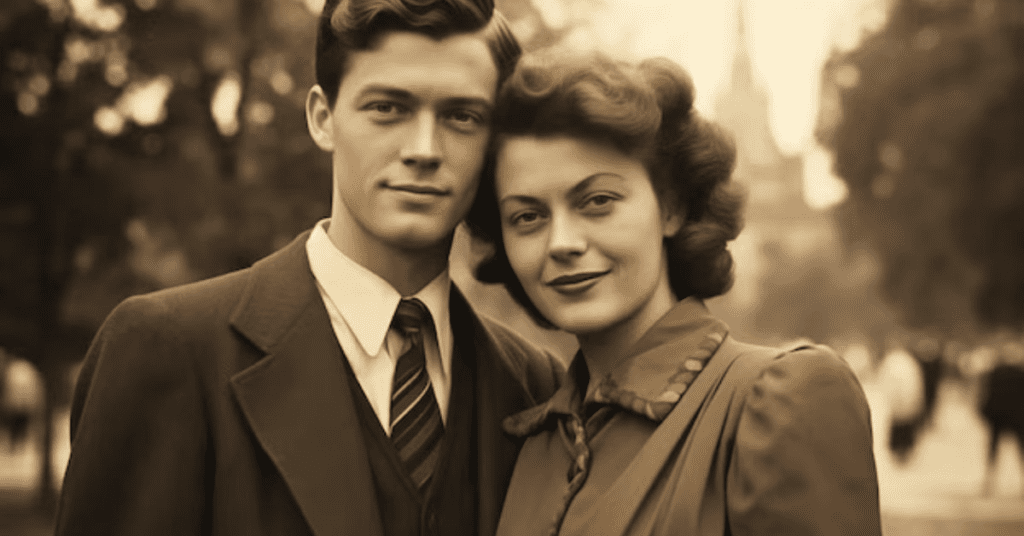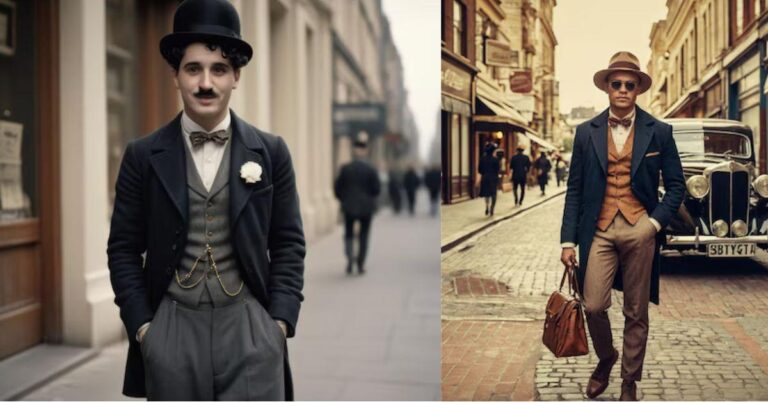The 1940s were a transformative period for men’s fashion, marked by practicality and elegance. Influenced by World War II and the subsequent economic changes, men’s clothing became more functional while maintaining a sense of style that still resonates today. This decade gave birth to several iconic trends, from military-inspired garments to refined evening wear, many of which remain timeless. Let’s explore the key styles and trends that defined 1940s men’s fashion.
The Impact of World War II on 1940s Men’s Fashion
The Second World War had a profound effect on fashion globally, and men’s clothing was no exception. With fabric rationing in place, designs became more streamlined, focusing on utility over extravagance. This practical approach led to the popularity of more tailored and minimalistic garments. However, this era was far from dull; it celebrated subtle sophistication through precise cuts, fine materials, and attention to detail.
Iconic 1940s Men’s Fashion Pieces
The Double-Breasted Suit
The double-breasted suit was a staple in the 1940s, epitomizing the era’s elegance. Despite fabric restrictions, men sought to look sharp, and the double-breasted suit delivered just that. Characterized by wide lapels and a fitted waist, this suit became a symbol of masculinity and power. Even today, the double-breasted suit is revered for its classic appeal.
Military-Inspired Clothing
The war effort heavily influenced men’s fashion, introducing elements like bomber jackets, trench coats, and khaki trousers. These garments were not just practical; they also represented the disciplined and heroic image of the wartime man. Post-war, these military styles transitioned into everyday fashion, blending functionality with a sense of ruggedness.
The Fedora Hat
No discussion of 1940s men’s fashion is complete without mentioning the fedora. This wide-brimmed hat became synonymous with the well-dressed man. Made from felt, the fedora added a touch of sophistication to any outfit, whether casual or formal. Its popularity during this decade cemented its status as an enduring fashion accessory.
Casual Wear in the 1940s


While formal wear dominated the era, the 1940s also saw the rise of casual clothing. The leisure suit, a relaxed alternative to the traditional suit, became a weekend favorite for men. Made from lighter fabrics and often featuring open-collared shirts, the leisure suit embodied the post-war shift towards comfort without sacrificing style.
1940s Footwear: Function Meets Fashion
Footwear in the 1940s was a blend of function and fashion. The Oxford shoe, known for its closed lacing and polished finish, was a must-have for formal occasions. On the other hand, loafers gained popularity for their ease and versatility, fitting seamlessly into both casual and semi-formal attire. Boots, particularly those inspired by military design, were also a key part of a man’s wardrobe, providing durability and style.
The Evolution of 1940s Men’s Hairstyles
Men’s hairstyles in the 1940s were as polished as their clothing. The side-parted hairstyle, often slicked back with pomade, was the dominant look. It complemented the structured clothing of the era, giving men a neat and refined appearance. For those in the military, the buzz cut was common, reflecting the decade’s emphasis on discipline and order.
Timeless Trends from the 1940s
The 1940s left a lasting legacy in men’s fashion, with many trends from the decade still influencing modern style. The double-breasted suit continues to be a wardrobe essential for those seeking a classic and powerful look. Military-inspired clothing, from bomber jackets to chinos, remains popular for its practicality and rugged appeal. Even the fedora, though not as prevalent, still carries an air of sophistication for those who choose to wear it.
Conclusion
The 1940s were a pivotal decade for men’s fashion, balancing practicality with style. The era’s influence is evident in many of today’s trends, from tailored suits to military-inspired outerwear. By understanding the key elements of 1940s fashion, we gain insight into how style can evolve while remaining timeless. Whether you’re a fashion enthusiast or someone looking to incorporate a bit of vintage flair into your wardrobe, the iconic styles and trends of the 1940s offer a rich source of inspiration.


